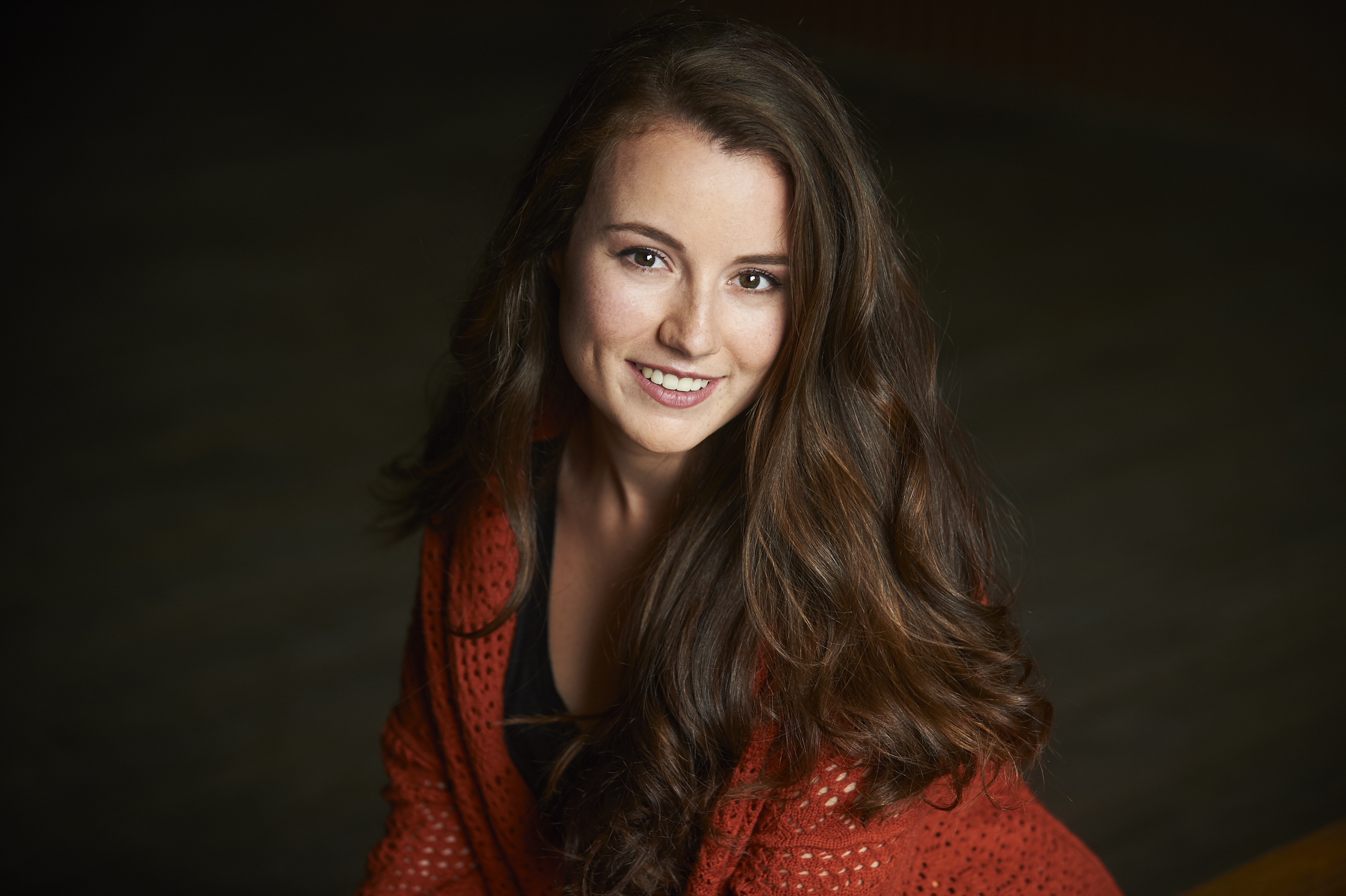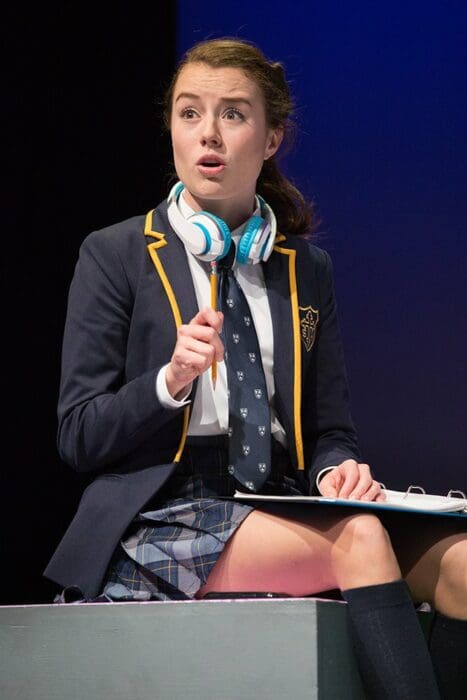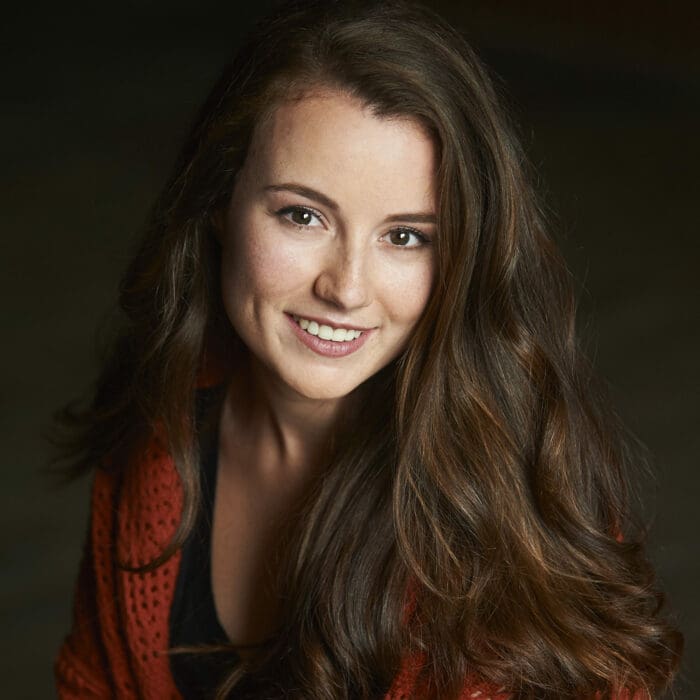 Before we announce the winners of the 2018 MyEntWorld Critics’ Pick Awards, we’re proud to present our annual Nominee Interview Series.
Before we announce the winners of the 2018 MyEntWorld Critics’ Pick Awards, we’re proud to present our annual Nominee Interview Series.
2018 was the year of the young woman in Toronto theatre. All over town, emerging female artists finally got the showcases they deserve as too-often-overlooked female stories were finally being told. Tarragon Theatre’s Girls Like That is maybe the most glaring example, bringing together an incredibly fierce Outstanding Ensemble of diverse young women to tell a difficult and traumatically relatable story about high school and the ostracizing traps we fall into when we should be staring down the patriarchy together.
One of the real standouts of the Girls Like That ensemble was Rachel VanDuzer whose role as “the follower” was complicated, thoughtful, and totally recognizable. She’s just about to open The Gamblers with Talk is Free Theatre in Barrie; get your tickets HERE.
Can you remember your first experience with theatre?
I remember seeing Beauty and the Beast while on a trip at Disney and dreaming of what it would be like to be Belle. Singing about books and talking to inanimate objects on stage just seemed like something I could see myself doing.
When did you know you wanted to be a performer?
High school is where I found my love for theatre. Being on my high school stage, performing, collaborating and working with people who connected to the work just as I did is when I knew that I wanted to be an actor. And this is in high school; even though I was still trying to figure out who I was, I knew that performing was going to be a part of who I was forever. It was the first time that I felt like my most authentic self.
What’s your favourite piece you’ve ever worked on?
This show. No question.
Do you have a dream project?
The next Equity contract? Just kidding, (but not really). If we are talking dream roles, I have always wanted to play Barbara in Major Barbara by George Bernard Shaw. Also, Elizabeth Bennett in Pride and Prejudice.
How did you get involved with Girls Like That?
In my graduating year of the Theatre and Drama Studies program at the University of Toronto with Sheridan College, I submitted for Tarragon’s general auditions. From the general, I was called in to audition for Girls Like That. Each time I entered those audition rooms Esther [Jun, director] kept asking, “have you graduated yet?”.
 The play as-written doesn’t assign lines or define who the characters are. Tell us about the development of your character.
The play as-written doesn’t assign lines or define who the characters are. Tell us about the development of your character.
This was such a thrilling part of the process. In November of 2017, we had a two-day workshop where we began to develop characters and assign lines. Esther gave each of us a broad stereotype for each of our characters. These stereotypes were meant to serve as a jumping off point in assigning lines and this helped to start to give shape and give life to these characters. Esther assigned me the stereotype of the follower – driven by fear of being at the bottom of the pecking order. During this two-day workshop, Esther went through the script and had assigned lines, but they were not set in stone. The rule was that any of them could be swapped with another character. So, we read through the play a couple of times and set off to determine if any line changes should be made. We would make a claim that the one line should go to ourselves if we thought it fit our character or we would speak up if we thought the line should belong to any of the other character types. It was so much fun. It was an incredible start to character development as we immediately had to jump on the lines and the thoughts that initially spoke to us.
What were some of the key conversations you had with your director Esther Jun in developing your interpretation of the piece?
We had many conversations about “the space in between” which is an idea that one of the girls addresses in the show. The space in between being the space between slut and prude, which was the space where these girls fiercely wanted to exist. These girls are searching for this space throughout the show, but the real question was this; does this space even exist? How do I get there? What happens if I find it and what does that make me if I do? Another major topic we returned to in our work was the concept of the “pecking order”. This manufactured social standing within the school was determined on the playground on their first day of kindergarten. This order is life and death to these girls. This concept helped me immensely with my own character development within the piece. My character fought hard to keep Scarlett on the bottom of the pecking order as she knew if Scarlett gained any social standing with the girls, she would be at the bottom. As a result, my character, racked with insecurities and driven by fear, is what ended up making her one of the most ruthless characters. These concepts strongly impacted the interpretation of my character.
Tell us about the creation of those show-stopping dance transitions and what they brought to the piece tonally.
Alyssa Martin, our genius choreographer, created these incredible dance numbers. The first three hours of our rehearsals were devoted to learning these numbers. At the heart of it, these numbers served as a form of escape for the girls. We would put on our headphones and escape into our imaginary world. For the first half of the show, these numbers are slick and polished as if we were the stars of our own music videos. However, as the play starts to progress into darker territory, and the girls start to lose sight of themselves, the numbers become less cohesive and begin to break down. By the time the final number arrives, the girls believe Scarlett is dead and they are unable to finish the dance number. Escape is no longer an option for them. Not only was Alyssa able to create numbers that evoked the magical, imaginary worlds of these girls but also offered insights into our internal realities.
 For a lot of women, the play felt extremely personal. What were some of the ways you brought your own experiences to the material?
For a lot of women, the play felt extremely personal. What were some of the ways you brought your own experiences to the material?
I will never forget reading the script for the first time. I was incredibly affected by it. To be honest, the script scared me so much because there was very little that I didn’t connect to. The play really made me face some of the things from adolescence and high school that I pushed away. I saw myself in Scarlett, and I even saw parts of myself in the bullies as well. When we were doing table work in rehearsal it became apparent that the entire ensemble felt similarly. As a team, we were open and honest with each other from the get go. We cried, we laughed and we listened. We shared personal stories that felt like we were reading out of our diaries that we had stashed away for so long. Bringing my own experiences to the material was not hard because so much of what was in the script is a part of my story as well.
Considering the speed at which technology evolves the issues in the play, did you do much research into the experiences of teenagers today compared to when you were in high school?
I got my first cell phone in my first year of high-school. It had a walkie talkie function and didn’t fit in my pocket. I could only hold twenty texts at a time and had no data. At that time, data wasn’t really necessary as I was just leaving my MSN days behind me and only then was starting to move towards Facebook. I have some younger cousins, so I remember paying specific attention to what they were putting on social media and I asked them about their experiences. But most of my research happened by accident one day in Starbucks. I was waiting in line and there was a group of students ahead of me, who were probably in the 6th or 7th grade. One girl said to her friend, “I’m going to get the Strawberries & Crème Frappuccino, I don’t really like them but it will look good on my Instagram.” Middle school and high-school students are much more immersed in the digital world than I ever was at that age, and the fact that this girl was making day-to-day choices based on her online persona was very telling indeed. This was all the research that I needed.
The production inspired extremely polarized reactions. What is your response to the criticism the play received?
What I took away from the polarized reactions is that it got people talking. Members of the theatre community and even those removed from it brought their reactions and opinions to social media and a dialogue was created online. Criticisms are often raised and then left untouched, but this show sparked a dialogue; I think this speaks to the explosive quality that this play possesses. The show made people reflect, pose questions and continue the conversations that we were having throughout the entire rehearsal process and beyond.
Did you get a chance to speak to any teenage girls who saw the production? What was their reaction?
We had many students come and see the show. It was thrilling to perform for these students and gauge their reactions. It was fascinating – for the most part they were very supportive, vocal audiences. They were laughing, cheering us on, and singing along with Beyoncé at the top of the show. But then, as the bullying of Scarlett progressed, and things got violent you couldn’t hear a thing. They were rattled by it. I always tried to stay afterwards for the talkbacks with them. Most of them were surprised and thankful to see themselves represented on stage. Some girls also said that for the first half of the show they saw themselves in Scarlett, but then realized they actually identified with every single one of the girls on stage; the girls who were the cause of Scarlett’s pain, and within Scarlett’s pain as well. I also had some students reach out to me through social media saying how deeply they connected to the show. A parent even emailed me explaining how much she and her daughter enjoyed the show, and said that they were going to come again and that she would bring her son along this time.
Did you have a favourite moment in the production?
Top of the show, when all of us put our headphones on for the first time, and we all began dancing to Beyoncé’s “Run the World”. Dancing with those women, to that song every show – wow.
What are you working on now/next?
I am currently working with Talk is Free Theatre on The Gamblers, which is going up in Barrie from March 28th-April 6th. Esther Jun is directing, and I could not be more thrilled to be working with her again.
Do you have anything you’d like to add?
This show was my first professional theatre contract. And I have to pinch myself when I think of the fact that my first professional gig was in a show devoted to the empowerment of women; for that I am so grateful and proud. So, here’s to all of the girls. Those that are flawed, brave, confused, fierce, lost, powerful, strong, fearless, EVERYTHING – You are magical. “Us girls got to stick together.” Because here’s the thing, we are going to screw up, make the wrong decisions, say the wrong things and think thoughts that scare us sometimes. So, surround yourself with those who give you space to grow. Those who support you, make you laugh, challenge you and continually make you be the best version of yourself.

